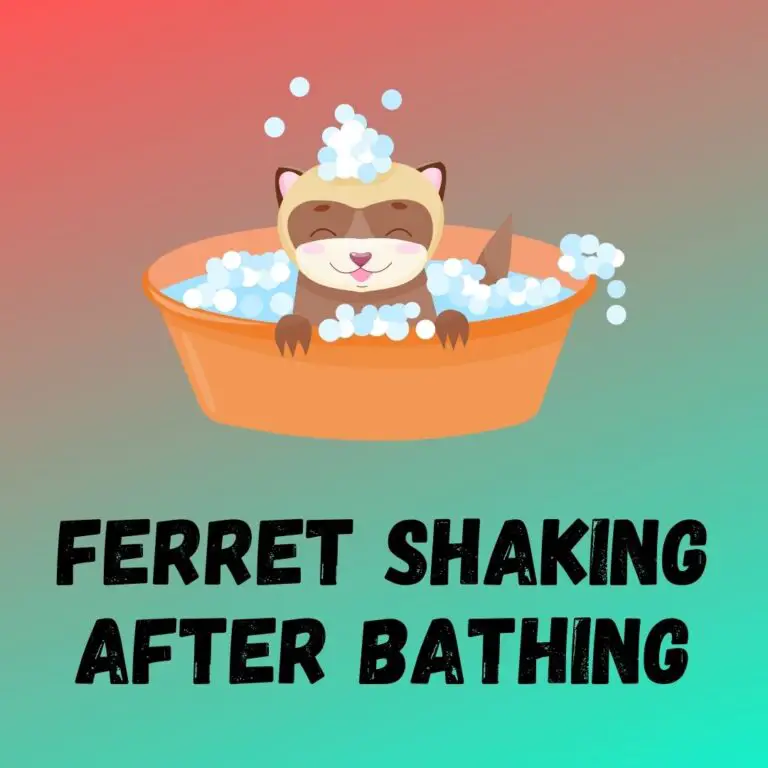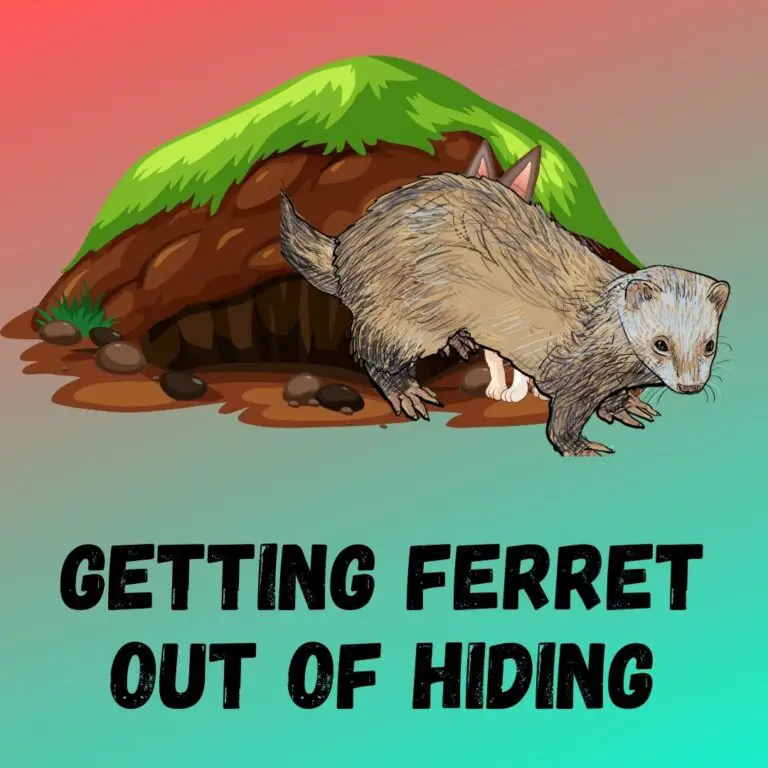
If you’re a ferret owner, you know how curious and mischievous these little creatures can be. Unfortunately, their adventurous nature can sometimes lead to unexpected encounters, like getting stung by a bee. As a ferret owner myself, I’ve experienced this situation firsthand and understand the concern it can cause. In this article, I’ll share with you some important steps to take if your ferret gets stung by a bee. By following these guidelines, you’ll be able to provide the necessary care and support to ensure your furry friend recovers quickly and comfortably. So, let’s dive in and learn what to do when your ferret encounters a bee sting.
Recognizing Symptoms of a Bee Sting
If you suspect that your ferret has been stung by a bee, it’s important to be able to recognize the symptoms. While some signs may be similar to other health issues, there are specific indicators that can help you determine if it’s a bee sting:
- Swelling: A common symptom of a bee sting is swelling at the site of the sting. This can be mild or severe, depending on your ferret’s reaction.
- Redness and Pain: Look for redness and sensitivity in the area where your ferret was stung. They may exhibit signs of discomfort and may paw or scratch at the affected area.
- Inflammation: Inflammation can occur around the sting site as a response to the venom. Keep an eye out for any noticeable changes in the affected area.
- Difficulty Breathing: In some cases, a severe allergic reaction to a bee sting can lead to difficulty breathing. If you notice your ferret having trouble catching their breath, seek immediate veterinary assistance.
- Behavior Changes: A bee sting can also cause your ferret to exhibit changes in their behavior. They may become more agitated, restless, or exhibit signs of pain or discomfort.
It’s important to note that the severity of the symptoms can vary depending on your ferret’s individual reaction to the sting. If you notice any of these signs, it’s crucial to take prompt action to ensure the well-being of your furry friend.
Assessing the Severity of the Bee Sting
When your ferret gets stung by a bee, it’s important to assess the severity of the sting. This will help you determine the appropriate course of action and provide the necessary care for your furry friend. Here are some steps to help you assess the severity of a bee sting:
- Observe the affected area: Carefully examine the area where your ferret was stung. Look for any signs of swelling, redness, or pain. If the bee sting is on a visible body part, such as the nose or paws, it may be easier to assess the severity.
- Check for inflammation: Inflammation is a common symptom of a bee sting. Gently touch the area and see if it feels warm or looks swollen. If there’s a significant amount of inflammation, it could indicate a more severe reaction.
- Monitor breathing: Bee stings can cause allergic reactions, which may affect your ferret’s breathing. Keep an eye on their breathing rate and look for any signs of difficulty breathing or wheezing. If you notice any changes, it’s important to seek veterinary assistance promptly.
- Watch for behavior changes: Bee stings can be painful for ferrets, and they may exhibit behavior changes as a result. Watch out for signs of discomfort, restlessness, or agitation. In severe cases, your ferret may become lethargic or lose their appetite.
Remember, the severity of a bee sting can vary, with some ferrets experiencing mild reactions while others may have more severe symptoms. If you’re unsure about the seriousness of the sting or if your ferret is showing signs of distress, it’s always best to consult a veterinarian. They can provide professional guidance and recommend appropriate treatment options.
By assessing the severity of the bee sting, you can ensure that your ferret receives the necessary care. The next section will cover some immediate steps to take after assessing the severity of the sting, so stay tuned.
Consulting a Veterinarian
When it comes to a honey bee sting, it’s crucial to consult a veterinarian, especially if you’re unsure about the severity of the sting or if your ferret is showing signs of distress. A veterinarian is the best person to guide you through the next steps and provide the necessary treatment for your furry friend. Here are a few reasons why consulting a veterinarian is important:
- Professional Experience: Veterinarians have the expertise and knowledge to accurately assess the severity of the bee sting and provide appropriate treatment. They understand the unique anatomy and physiology of ferrets, which allows them to make informed decisions regarding medications and interventions.
- Medical Advice: A veterinarian can provide personalized medical advice tailored to your ferret’s specific situation. They will examine the affected area, consider any underlying health conditions, and prescribe appropriate medications or interventions to alleviate pain and reduce swelling.
- Prevention of Complications: Bee stings can sometimes lead to complications, especially if your ferret has an allergic reaction. Veterinarians can quickly identify the signs of an allergic reaction and administer necessary treatments to prevent further complications or even anaphylaxis, a severe and potentially life-threatening allergic reaction.
- Peace of Mind: Consulting a veterinarian not only ensures the well-being of your ferret but also provides peace of mind for you as a pet owner. You can trust that your furry friend is receiving the best possible care and that any concerns or questions you have will be addressed by a qualified professional.
Remember, time is of the essence when dealing with a bee sting. It’s better to be safe than sorry, so don’t hesitate to reach out to a veterinarian if you have any doubts or concerns about your ferret’s condition. Veterinary care is essential to ensure a swift recovery and to minimize any potential risks or complications associated with a bee sting.
Providing Immediate First Aid
When your ferret gets stung by a bee, it’s important to act quickly and provide immediate first aid. Here are the steps you should take to help alleviate your furry friend’s discomfort:
- Stay calm: I know it can be alarming to see your ferret in pain, but staying calm is crucial. Your ferret can sense your anxiety, which may further agitate them. So take a deep breath and remain composed.
- Remove the stinger: If you can see the bee’s stinger still lodged in the skin, gently remove it using a pair of tweezers. Be careful not to squeeze or crush the stinger, as this can release more venom into the wound.
- Apply a cold compress: To help reduce swelling, take a clean cloth or towel and dampen it with cold water. Gently apply the compress to the affected area for a few minutes at a time. This can help soothe the pain and minimize any inflammation.
- Monitor for signs of an allergic reaction: While most bee stings cause only mild discomfort, some ferrets may have an allergic reaction. Keep an eye out for any abnormal symptoms such as difficulty breathing, hives, or excessive swelling. If you notice any of these signs, seek veterinary assistance immediately.
- Offer pain relief: If your ferret is showing signs of discomfort, you can provide some pain relief by giving them a small dose of over-the-counter antihistamine medication. However, it’s important to consult your veterinarian before administering any medication to ensure it’s safe for your ferret’s specific situation.
Remember, while immediate first aid can provide temporary relief, it’s crucial to reach out to a veterinarian for further guidance. They can assess the severity of the sting and provide appropriate medical advice tailored to your ferret’s needs.
Monitoring Your Ferret’s Condition
Once you have provided first aid for your ferret after a bee sting, it is important to carefully monitor their condition. By observing their behavior and physical symptoms, you can assess the severity of the sting and determine if further veterinary intervention is necessary.
Here are some key steps to monitor your ferret’s condition:
- Check the affected area: Look for any signs of swelling, redness, or pain at the site of the sting. Take note of any changes in these symptoms over time.
- Observe for inflammation: Keep an eye out for any signs of inflammation, such as hot or tender skin around the sting site. Swelling and redness may indicate an allergic reaction or infection.
- Monitor breathing: Pay attention to your ferret’s breathing. If you notice any difficulty or changes in their respiratory pattern, it could be a sign of a more severe reaction. Rapid or labored breathing should be taken seriously and require immediate veterinary attention.
- Watch for behavior changes: Look out for any changes in your ferret’s behavior, such as increased discomfort, restlessness, or agitation. These could be indications of pain or distress and may require further evaluation by a veterinarian.
Remember, every ferret’s response to a bee sting may vary, so it’s important to monitor them closely to ensure their well-being. If you are unsure about the severity of the sting or if your ferret is showing signs of distress, don’t hesitate to consult your veterinarian for guidance.
By monitoring your ferret’s condition after a bee sting, you can take appropriate action and provide the necessary care to help them recover.
Preventing Future Bee Stings
When it comes to our beloved ferrets, it’s always better to prevent a problem rather than have to treat it. While we can’t completely eliminate the risk of bee stings, there are steps we can take to minimize the chances of our ferrets getting stung. Here are a few tips to help prevent future bee stings:
- Supervise outdoor playtime: When allowing your ferret to play outdoors, keep a close eye on them. Regular supervision helps ensure that you can quickly intervene if they come across a bee or other insects.
- Avoid flowering plants: Be mindful of the plants in your yard or garden. Some flowering plants are more attractive to bees, increasing the chances of a sting. Consider removing or relocating these plants to a less frequented area or opting for bee-friendly alternatives.
- Securing garbage bins: Ensure that your garbage bins are securely sealed. Bees are attracted to sweet-smelling substances, and an open garbage bin can entice them. Properly securing your bins reduces the chances of attracting bees to your outdoor space.
- Cover food and drink: Whether you’re inside or outside, be sure to cover your food and drinks. Sweet or sugary foods and beverages can attract bees, increasing the chances of an encounter. By keeping your food and drink covered, you can minimize the risk of bees being attracted to your ferret’s area.
- Consider protective clothing: If you live in an area with a high risk of bee encounters, consider dressing in long sleeves and pants when spending time outdoors with your ferret. Wearing light-colored clothing can also help reduce the chances of attracting bees.
By following these preventive measures, you can significantly reduce the chances of your ferret getting stung by a bee. However, accidents can still happen despite our best efforts. If your ferret does get stung, remember to provide immediate first aid and closely monitor their condition. And as always, if you’re unsure or your ferret shows signs of distress, consult your veterinarian for expert advice and assistance.
Now that we’ve covered how to prevent future bee stings, let’s move on to our next topic: what to do if your ferret is showing signs of distress after a bee sting.
Conclusion
Taking immediate action when your ferret gets stung by a bee is crucial for their well-being. By staying calm and providing first aid, such as removing the stinger if visible and applying a cold compress, you can help alleviate their discomfort. However, it doesn’t end there. Monitoring your ferret’s condition after a bee sting is equally important.
Keep a close eye on the affected area for any signs of swelling, redness, or pain. Watch out for inflammation and observe their breathing for any signs of difficulty. Behavior changes should also be noted. Remember, prevention is key to avoiding future bee stings. Supervise outdoor playtime, avoid flowering plants, secure garbage bins, cover food and drink, and consider protective clothing.
It is crucial to provide immediate first aid and consult a veterinarian if unsure or if your ferret shows signs of distress. By being proactive and taking the necessary precautions, you can ensure your furry friend’s safety and well-being.






